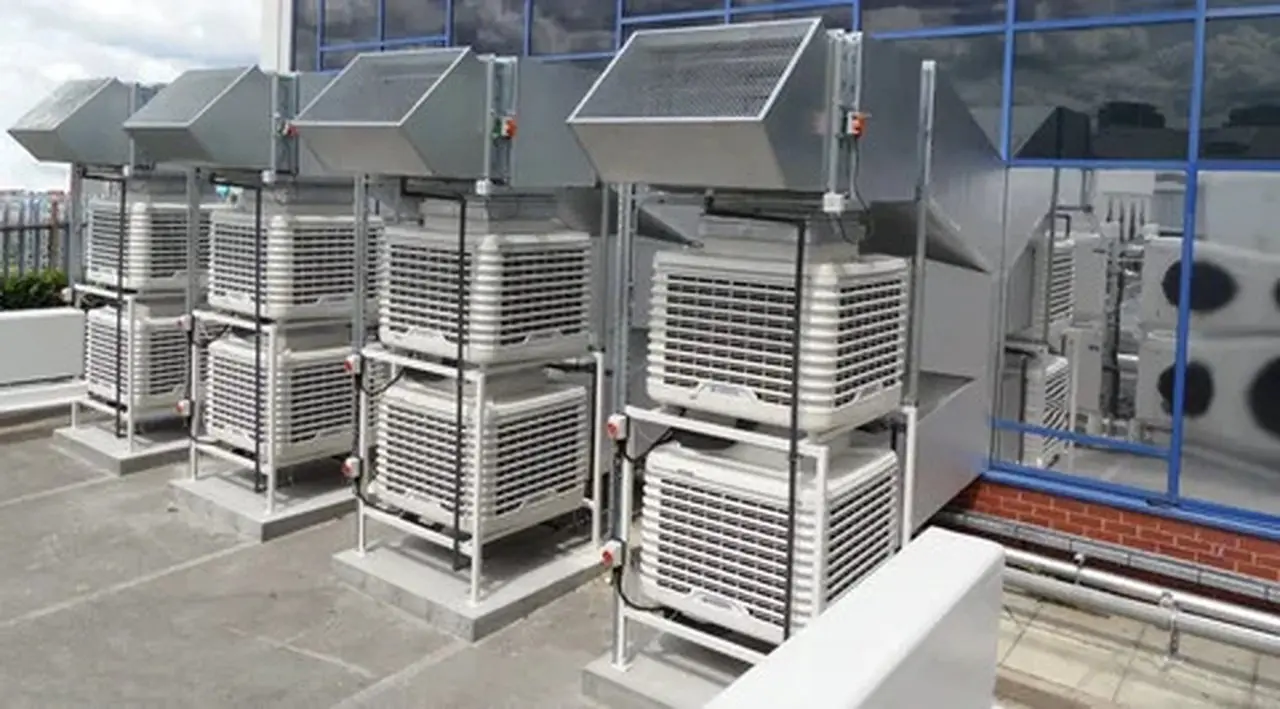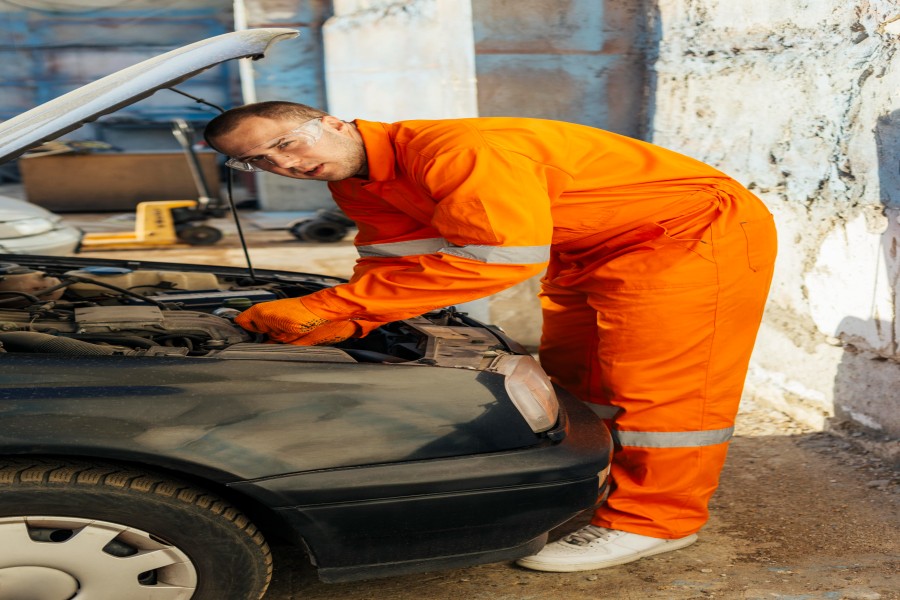Indoor air quality and energy efficiency have become paramount concerns in today’s world, and heat recovery systems offer a cutting-edge approach to addressing these issues. By leveraging the principles of heat recovery ventilation, HRV systems can significantly improve indoor environments by providing constant fresh air and removing contaminants. This blog post delves into the workings, advantages, installation, and maintenance of hrv heat recovery, providing insights into how they contribute to a healthier and more energy-efficient living or working space. A comprehensive examination highlights the numerous benefits and practical applications of HRV recovery systems.
Functionality of HRV Systems
HRV systems utilise the principle of heat recovery ventilation to enhance indoor air quality whilst conserving energy. These systems work by expelling stale indoor air and bringing fresh outdoor air. The heat from the outgoing air is transferred to the incoming air via a heat exchanger. This maintains a comfortable temperature indoors and reduces the need for additional heating or cooling, lowering energy consumption.
Essential components include the heat exchanger, fans, and control units, ensuring optimal performance. The fans are responsible for moving air in and out, whilst the control units regulate airflow and temperature. This coordinated mechanism provides a consistent supply of fresh air and an efficient indoor climate, contributing to a healthier and more comfortable living or working environment.
Advantages of Implementing Heat Recirculation System
Energy Efficiency and Cost Savings
Introducing heat recirculation system brings multiple benefits, notably highlighting the reduction of energy use and improving indoor air standards. These units diminish the need for conventional heating and cooling by reclaiming and recycling heat from outgoing air. This results in decreased energy expenses and promoting environmental conservation by lowering overall energy usage.
Enhanced Air Quality and Comfort
Elevated air quality is another vital advantage, as HRV units proficiently filter out pollutants, allergens, and surplus moisture from indoor spaces. This fosters a healthier environment for living or working, lessening the likelihood of breathing-related issues and other health concerns linked to subpar air conditions.
Furthermore, these units enhance comfort by ensuring a stable indoor temperature, making interiors more pleasant. The combined effects of these advantages render HRV units a compelling choice for contemporary structures, aligning with modern energy conservation and resident health aims.
Setting Up HRV Systems
Setting up an HRV system involves several key steps that require careful planning and execution. The building’s requirements must be evaluated to select an appropriately sized unit. The installation process generally starts with positioning the HRV unit in a suitable location, ensuring it is accessible for future maintenance. Once the unit is in place, ductwork is connected to facilitate the exchange of indoor and outdoor air.
Proper ductwork insulation is crucial to prevent energy loss and maintain system efficiency. Electrical connections are then made to power the unit, and its components and control systems are used to regulate airflow and temperature.
While some may consider a DIY approach, professional installation is strongly recommended to ensure the system operates efficiently and complies with all relevant building codes and regulations. Engaging a qualified technician can also help address installation challenges, providing the HRV system is set up correctly from the outset.
Upkeep of HRV Systems
Regular maintenance is crucial for the optimal performance of HRV systems. Key tasks include cleaning or replacing air filters, which trap dust and other particles, ensuring the fans are operating efficiently, and checking the heat exchanger for any signs of blockage or dirt. Periodic inspections should also be conducted to verify that the system’s ducts are free from obstructions and are adequately insulated to prevent energy loss.
Additionally, it is essential to monitor the control units and sensors to ensure they function correctly, as they play a vital role in regulating airflow and temperature. Addressing unusual noises or reduced airflow promptly can prevent more significant issues.
Engaging a professional for an annual service check can help identify electrical problems, ensuring the system remains efficient and reliable over time. Proper upkeep extends the lifespan of the HRV system and maintains its energy-saving and air quality benefits.
Selecting the Appropriate HRV Heating
Selecting the right hrv heating involves various considerations. The building’s size, the local climate, and specific air quality requirements determine the most appropriate unit. Different HRV systems offer varying features and efficiencies, making understanding the available options essential. Some systems are designed for high-efficiency performance in colder climates, whilst others are tailored for milder conditions.
Additionally, specific indoor air quality concerns, such as high humidity or pollutants, may influence the choice of system. It is also essential to consider the energy performance ratings of different units, as higher-rated systems typically provide more significant energy savings and improved air quality.
Consulting with a professional can help assess factors and select a system that aligns with the building’s needs and the occupants’ comfort.
HRV Effectiveness Case Studies
Numerous case studies have highlighted the effectiveness of HRV systems in enhancing indoor air quality and energy efficiency. These real-world examples reveal significant reductions in energy bills and increased comfort levels in various settings, from residential homes to commercial buildings. One study on a multi-storey office building demonstrated a notable decrease in heating and cooling costs after installing an HRV system.
Another case involving a family home in a temperate climate showed a marked improvement in air quality, with reductions in indoor pollutants such as carbon dioxide and volatile organic compounds. These improvements contributed to better health outcomes, including fewer respiratory issues and enhanced overall well-being for the occupants. In both scenarios, the HRV systems proved to be a valuable investment, delivering both economic and health benefits.
The documented cases consistently support the notion that HRV systems are a practical solution for modern buildings aiming for greater energy efficiency and improved indoor environments.
Future Developments in HRV Technology
The field of HRV technology is poised for significant advancements, with emerging trends focusing on enhancing system efficiency and user experience. One promising development area is integrating innovative technology, which allows HRV systems to adapt dynamically to real-time indoor and outdoor conditions. Innovations in heat exchanger materials are also on the horizon, aimed at improving thermal efficiency and reducing system size.
Additionally, artificial intelligence and machine learning could enable more predictive maintenance and optimised performance, identifying potential issues before affecting system efficiency. Energy recovery ventilators (ERVs), which manage humidity alongside temperature, are being refined to offer more precise control, particularly in regions with variable climates.
As the demand for sustainable building solutions grows, HRV systems are expected to incorporate renewable energy sources, such as solar power, to reduce their carbon footprint further. These advancements indicate a future where HRV systems are more efficient, user-friendly, and aligned with broader environmental goals.
Common HRV Misunderstandings
One common misunderstanding about HRV systems is the belief that they are only suitable for new constructions. HRV systems can be retrofitted into existing buildings, provided the appropriate modifications are made. Another misconception is that HRV systems significantly increase energy consumption due to the use of fans and other components.
However, these systems are designed to be energy-efficient, and the energy savings from reduced heating and cooling requirements typically outweigh the energy the system uses. Additionally, some assume that HRV systems are maintenance-free when, in fact, regular upkeep is essential for optimal performance. There is also a belief that HRV systems are only necessary in colder climates.
While they are highly beneficial in such conditions, HRV systems offer advantages in various climates by improving air quality and comfort. Lastly, HRV systems are overly complex to operate.
Modern HRV units come with user-friendly controls and automated features, making them accessible to many users. Understanding these aspects helps appreciate the actual value and functionality of HRV systems in diverse settings.
Conclusion
HRV heat recovery systems improve indoor air quality and energy efficiency by balancing fresh air supply and energy conservation. They reduce reliance on traditional heating and cooling methods, creating healthier and more comfortable indoor environments. HRV systems offer advantages in construction and retrofits and are suitable for various building types and climates. Technological advancements enhance their performance, making them essential for sustainable building practices. Proper installation and regular maintenance ensure efficient operation over time, aligning with modern energy efficiency goals, occupant well-being, and environmental sustainability.
FAQs
What are the main benefits of HRV heat recovery systems?
Hrv heat recovery improves indoor air quality, enhance energy efficiency, provide a constant supply of fresh air, and reduce the reliance on traditional heating and cooling methods, contributing to healthier indoor environments.
How do HRV systems balance fresh air supply and energy conservation?
HRV systems capture and reuse heat from exhaust air to precondition incoming fresh air, reducing energy demands for heating and cooling while maintaining a continuous flow of fresh air.
Why is proper installation and maintenance necessary for HRV systems?
Proper installation and regular maintenance ensure that HRV systems operate efficiently and effectively, preventing common issues, optimising performance, and extending the lifespan of the equipment.
Are HRV systems suitable for all types of buildings and climates?
Yes, HRV systems are versatile and can be used in various building types and climates, offering significant benefits in new constructions and retrofits.
How do HRV systems align with modern sustainable building practices?
HRV systems support energy efficiency and occupant well-being, aligning with contemporary environmental sustainability goals by improving indoor air quality and reducing energy consumption.
| Related Business Listings |
| Contact Directory |
| Local Business Profiles |



